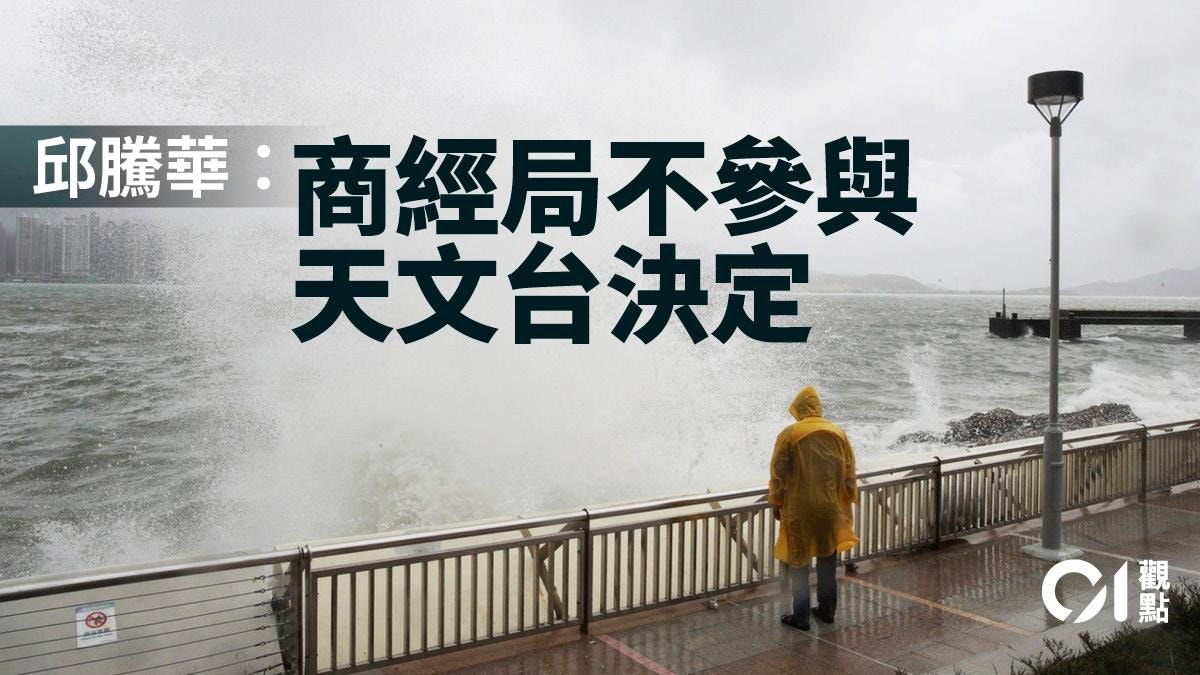Hong Kong experienced two storm signals No. 8 in just three days. The two typhoon signals were only 60 hours and 40 minutes apart, setting the latest record for the time between the two typhoon signals of No. 8 brought by different tropical cyclones in Hong Kong.
Frequent tropical cyclone warnings not only reflect the increasing extremes of the weather under global warming, but at the same time, Hong Kong society has a strong demand for weather warnings and effective contingency measures.
Last Friday (8th) during the typhoon "Lion Rock" struck Hong Kong, a female worker died accidentally while working during Typhoon Signal No. 3.
Of course, the Observatory can only issue signals based on scientific astronomical forecasts. As the Commerce and Economic Development Bureau Yau Tenghua said, "The Bureau does not participate in the decision of the Observatory." Property and life?
+3
Elastic strain outside the mechanism
The Hong Kong Observatory’s weather warning has been developed for more than a hundred years since 1884. The service has been keeping pace with the times, and it was once the most important weather forecasting agency in Asia.
Since the 1960s, the Observatory has specially formulated various warning signals, including typhoon warning signals, thunderstorm warnings, and rainstorm warnings. It has gradually formulated different contingency measures to reduce various accidents caused by weather changes.
According to the current mechanism, the Observatory mainly refers to wind data recorded by a network of 8 reference wind measurement stations covering the whole territory and data from more than 100 rainfall stations in Hong Kong to make weather warning signals.
According to the guidelines of the Education Bureau and the "Employment Ordinance" and other arrangements, schools, employers and employees have made corresponding arrangements.
However, to truly assist the public in coping with inclement weather, the weather forecast is not sufficient.
In particular, Hong Kong is densely populated and the ratio of inter-regional work continues to increase. The development of urbanization has also made the public underestimate the accidents that various natural disasters can cause. The guidelines and contingency measures of government departments are even more important for urban governance and response. Part of the plan.
For example, under the yellow rainstorm and Typhoon Signal No. 3, primary and secondary schools should operate as usual according to the guidelines, but the weather in individual areas may be very bad and require flexible handling.
The Education Bureau pointed out before the "Compass" hit Hong Kong that parents can decide whether they should let their children go to school in accordance with the weather conditions.
Another example is that although the Labour Department has formulated the "Code of Practice under Typhoon and Rainstorm Warnings" to encourage customers and employees to make arrangements for working conditions in severe weather as early as possible, the government, apart from providing guidelines, does not seem to have a positive overall thinking. The inconvenience caused by extreme weather to the public.
The female worker accident last week has aroused public concern about the safety of construction-related workers in inclement weather.
To deal with the weather, we must govern our thinking
The Observatory is a technical and professional department. Regardless of whether it is subordinate to the Bureau of Commerce and Economic Development or the Bureau of Environment, relevant personnel can only issue weather warnings with reference to objective data, so that the society can respond and prepare before severe weather occurs.
However, the specific response requires the coordination and flexibility of higher-level officials. Therefore, the responsibility lies in how the officials governing Hong Kong understand the opinions of experts, and formulate effective mechanisms and make timely contingency measures.
It’s not just weather forecasts. In the past, when Hong Kong handled epidemics and other matters, the SAR government also relied on professional and technical analysis. This is what it should be. However, experts provide data and scientific evidence. As the governor of the SAR, it is the only way to make important decisions. Official.
Government departments must constantly review the current system arrangements and respond flexibly and flexibly in every matter.
Before the typhoon "Compasses" hit Hong Kong, the Observatory and various government departments effectively conveyed the storm message. As a result, the citizens were better prepared, proving that the government is capable of doing better.
With more and more extreme weather, can the relevant policy bureaus learn from experience and have better governance thinking to serve the public?
Let the weather data speak for one more step. Is law and order easier and harder to manage?
To shirk responsibility is not the way to govern

